ONCE IN A BLUE MOON I WISHED I WAS BORN WHITE, AS IN BLONDE WITH BLUE EYES AND 6 FT 3 INCHES TALL WHICH IS THE IDEAL HEIGHT.
Then I remember I am a chink with 5,000 years of recorded history and member of the superior race as sons of heaven no less. So I regain my senses and am glad I am a chinaman after all.
This 'Tomb Treasures of Han China' is the reason why. Who else but the Chinese would dare dream about creating a terra cotta army as companions of the afterlife? Which other Emperor and his subjects would be so audacious as to wish the Son of Heaven a lifespan of 10,000 years? Which, should it come true, would render his offspring a waste of time since thousands of generations would have to die first before the emperor is buried inside a jade cofffin clad in a jade suit after living for 10, 000 years.
So, if you are in England from now till 11 November 2012, go visit Fitzwilliam Museum in Cambridge for the seminal 'Search for Immortality; Tomb Treasures of Han China' and see what the fuss is all about. Some of these treasures are 4,000 years old yet some of the ornaments appear quite contemporary as some archaic designs continue to find favour today! And of course all the figurines are perfectly at home in a modern penthouse, grand mansion or flat anywhere on earth! Just shows how some designs are permanently alluring and attractive and totally timeless!
The 300 treasures in gold, silver, bronze, ceramics and clay are among the most important to ever leave China.

The Search for Immortality: Tomb Treasures of Han China
- The Han Dynasty established the basis for unified rule of China up to the present day. To maintain this hard-won empire the Han emperors had to engage in a constant struggle for power and legitimacy, with contests that took place on symbolic battlefields as much as on real ones. While written accounts provide an outline of these events, it is through the stunning archaeological discoveries of recent decades that the full drama and spectacle of this critical episode in Chinese history has been brought to life.
Dr Timothy Potts, Director of the Fitzwilliam Museum, commented: “It is impossible to overstate the importance of the Han Dynasty in the formation of a Chinese national culture and identity. At the time of the ancient Romans, the Han emperors were the first to unify a large part of the regions we now know as China under a sustained empire, which they ruled virtually unchallenged for 400 years. The Han Dynasty gave its name to the Chinese language, its script and the vast majority of the Chinese people. It was arguably the defining period of China’s history and the point of genesis for the China of today.
The spectacular objects in this exhibition bring to Cambridge the finest treasures from the tombs of the Han royal family, the superb goldwork, jades and other exquisitely crafted offerings the kings chose to be buried with on their journey to the afterlife. For their artistry, refinement and pure beauty they rival anything from the ancient world.”
The spectacular objects in this exhibition bring to Cambridge the finest treasures from the tombs of the Han royal family, the superb goldwork, jades and other exquisitely crafted offerings the kings chose to be buried with on their journey to the afterlife. For their artistry, refinement and pure beauty they rival anything from the ancient world.”
This pioneering exhibition will compare the spectacular tombs of two rival power factions: the Han imperial family in the northern ‘cradle’ of Chinese history, and the Kingdom of Nanyue in the south, whose capital in modern-day Guangzhou formed the gateway to the rich trade routes of the China Sea and Indian Ocean. Objects from these tombs have never before been displayed together as a single exhibition. Through the exhibition it is revealed how, in both life and in death, Empire and Kingdom played a diplomatic game of cat and mouse, one to assert its supremacy, the other to preserve its autonomy.
Protected by clay guardians and surrounded by jade and gold, the monarchs’ tombs were palaces fit for immortals. Each tomb was a symbol of power and majesty, designed to ensure that its owner continued to enjoy in the afterlife the same comforts and privileges afforded to them in life. In showing these two tombs together, The Search for Immortality sheds new light on a critical period of China’s early history. The exhibition will only be seen in Cambridge.
Curator of the exhibition, Dr James Lin, commented: “It is immensely exciting that we are able to compare these unique discoveries from two rival kingdoms for the first time in Cambridge, as the archaeology allows us to tell a story that textual evidence simply does not reveal. It is known from written records that the first Han Emperor and the first King of Nanyue vied with each other for power and legitimacy in southern China; this exhibition shows how the struggle to be known as ‘emperor’ in the southern borderlands continued into the second generation of the Nanyue kingdom, an episode mostly passed over in the historical chronicles.
Through a direct comparison of the tomb treasures from the Han imperial family with those of the second king of Nanyue, Zhao Mo, the exhibition shows how the latter’s funerary splendour continued to be styled on that of the Han heartland, often reaching the same level of exquisite artistry. This provides a new perspective on the Han period and how the imperial family continued to exert its influence, through both arms and art, to maintain control of their vast empire.”
Through a direct comparison of the tomb treasures from the Han imperial family with those of the second king of Nanyue, Zhao Mo, the exhibition shows how the latter’s funerary splendour continued to be styled on that of the Han heartland, often reaching the same level of exquisite artistry. This provides a new perspective on the Han period and how the imperial family continued to exert its influence, through both arms and art, to maintain control of their vast empire.”
The most powerful empire of the ancient world
Founded in 206 BC, the Han Dynasty followed the collapse and disintegration of the Qin Empire, which had been established only fifteen years earlier by China’s First Emperor, Qinshihuangdi. Except for a brief interruption in 9-25 AD, the Han emperors were to rule much of China for the next 400 years until 220 AD.
Founded in 206 BC, the Han Dynasty followed the collapse and disintegration of the Qin Empire, which had been established only fifteen years earlier by China’s First Emperor, Qinshihuangdi. Except for a brief interruption in 9-25 AD, the Han emperors were to rule much of China for the next 400 years until 220 AD.
Contemporaneous with the late republic and early Roman Empire, the Han is considered the ‘classical’ period of Chinese history and, at the time of the birth of Christ, was as great in population and power as the Romans. It saw the emergence of cultural values, ideologies and institutions which have remained central to Chinese identity ever since. During this period Confucianism, with its emphasis on loyalty to family and to the Emperor, was first adopted as the official ideology. It was also then that rigorous state examinations for selecting civil servants on the basis of merit rather than hereditary status were first introduced. In China today ‘Han’ is often used interchangeably with ‘Chinese’: the language is referred to as the Han language –Hanyu; Chinese script as Han writing – Hanzi; and over 90% of Chinese nationals regard themselves as Han Chinese – Hanren.
Rival kings
Zhao Tuo, a former commander in the army of the First Emperor, established the independent state of Nanyue in 204 BC. Its capital Panyu is modern-day Guangzhou (Canton) and was then, as now, a busy commercial port and an eastern terminus of the ancient maritime Silk Route.
Zhao Tuo, a former commander in the army of the First Emperor, established the independent state of Nanyue in 204 BC. Its capital Panyu is modern-day Guangzhou (Canton) and was then, as now, a busy commercial port and an eastern terminus of the ancient maritime Silk Route.
In 196 BC Emperor Gaozu, founder of the Han Dynasty, sent an envoy demanding that Nanyue founding king, Zhao Tuo, submit to his authority. Zhao Tuo agreed and Nanyue was granted formal status as a vassal state of the Han Empire. Yet only a year later, having gained the allegiance of two neighbouring states, Zhao Tuo declared himself Emperor. After two years of conflict, Zhao Tuo once more ‘submitted’ to the Han ruler, though both he and his successors continued to style themselves ‘Emperor’ at home, using the lesser title of ‘King’ only in their dealings with the Han court.
The exhibition compares the tomb of Zhao Mo, Zhao Tuo’s grandson and successor from the Southern Nanyue kingdom, with the astonishing finds from three of the major northern Han tombs of the kings of Chu, a branch of the imperial family that had been granted this kingdom by the emperor. This is the first time such a comparison of the splendour and treasures of these two sets of rival tombs has been made.
Tomb treasures
The exhibition will reflect the layout of the funerary goods within the tombs, giving a sense of what it would have been like to walk through one of these tombs for the first time: being met by tomb guardians, progressing into the principal chambers with pottery servants, musical instruments and other treasures, and finally coming upon the inner sanctum with the burials of the kings themselves.
The exhibition will reflect the layout of the funerary goods within the tombs, giving a sense of what it would have been like to walk through one of these tombs for the first time: being met by tomb guardians, progressing into the principal chambers with pottery servants, musical instruments and other treasures, and finally coming upon the inner sanctum with the burials of the kings themselves.
Highlights include:
• two jade burial armour suits belonging to the rival rulers, painstakingly made from thousands of plaques of jade, sewn together with gold or silk thread
• lavish burial furnishings in jade thought to ward off demons or to serve the emperor in the afterlife, such as a jade cup to catch the morning dew that ensured immortality
• spectacular objects in gold, including imperial seals and exotically decorated belt buckles
• pottery soldiers and bronze weapons
• pottery dancers, musicians and servants
• unusual artefacts including a toilet and an early ginger grater.
• two jade burial armour suits belonging to the rival rulers, painstakingly made from thousands of plaques of jade, sewn together with gold or silk thread
• lavish burial furnishings in jade thought to ward off demons or to serve the emperor in the afterlife, such as a jade cup to catch the morning dew that ensured immortality
• spectacular objects in gold, including imperial seals and exotically decorated belt buckles
• pottery soldiers and bronze weapons
• pottery dancers, musicians and servants
• unusual artefacts including a toilet and an early ginger grater.
The Search for Immortality: Tomb Treasures of Han China has been made possible through the generous permission of China’s State Administration for Cultural Heritage, Art Exhibitions China, Xuzhou Museum and the Museum of the Mausoleum of the Nanyue Kings. The exhibition is part of the London 2012 Festival, a spectacular 12-week nationwide celebration from 21 June to 9 September 2012, bringing together leading artists from across the world with the very best from the UK.
Xuzhou Museum, situated in Jiangsu Province (north of Shanghai)
Built in 1959, the museum is based on the site of the temporary imperial palace of Emperor Qianlong, built for his inspection tour of the South of the Yangtze River in 1757. The Museum displays include: pottery, bronze and jade artefacts, stone and bone objects ranging from the Neolithic Age to the Qin Dynasty (221-206 BC); bronzes, celadons, jade articles, gold and silver vessels of the Han Dynasty (206 BC-220 AD); and over 140 articles in porcelain and metal from the Three Kingdoms Period (220-280 AD) to the Qing Dynasty. It has the only Han jade exhibition room in China and hundreds of terracotta figures. Located to the north of the Museum are three tombs of the regional Han nobility, from which numerous burial objects were excavated.
Built in 1959, the museum is based on the site of the temporary imperial palace of Emperor Qianlong, built for his inspection tour of the South of the Yangtze River in 1757. The Museum displays include: pottery, bronze and jade artefacts, stone and bone objects ranging from the Neolithic Age to the Qin Dynasty (221-206 BC); bronzes, celadons, jade articles, gold and silver vessels of the Han Dynasty (206 BC-220 AD); and over 140 articles in porcelain and metal from the Three Kingdoms Period (220-280 AD) to the Qing Dynasty. It has the only Han jade exhibition room in China and hundreds of terracotta figures. Located to the north of the Museum are three tombs of the regional Han nobility, from which numerous burial objects were excavated.
Museum of the Mausoleum of the Nanyue Kings
This museum occupies an area of 14,000 square metres and, at its centre, is the tomb of Zhao Mo, the grandson of Zhao Tuo, founding father of Nanyue Kingdom (203-111 BC). The kingdom was a vassal state in southern China during the Western Han Dynasty. The tomb is the largest known colour-painted stone tomb in Southern China and was buried 20 metres below the Xianggang Hill and has seven chambers. Discovered in June 1983, it is considered one of the top five archaeological finds in China in recent years.
This museum occupies an area of 14,000 square metres and, at its centre, is the tomb of Zhao Mo, the grandson of Zhao Tuo, founding father of Nanyue Kingdom (203-111 BC). The kingdom was a vassal state in southern China during the Western Han Dynasty. The tomb is the largest known colour-painted stone tomb in Southern China and was buried 20 metres below the Xianggang Hill and has seven chambers. Discovered in June 1983, it is considered one of the top five archaeological finds in China in recent years.
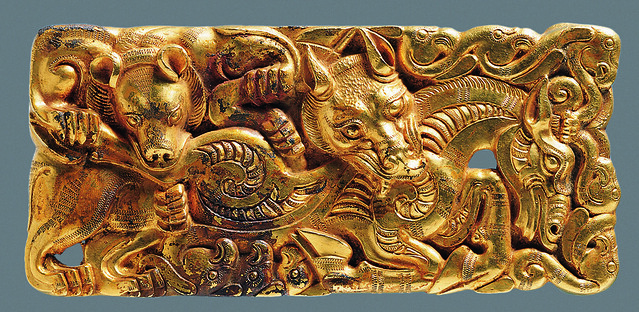 Gold belt plaque from Western Han dynasty (2nd century BC)
Gold belt plaque from Western Han dynasty (2nd century BC)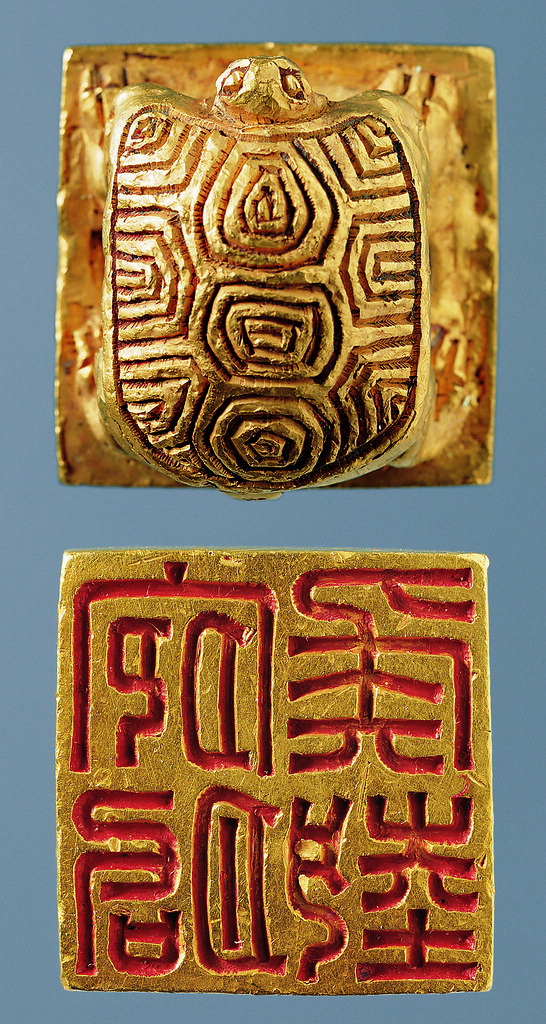
Gold seal belonging to Marquis of Wanqu
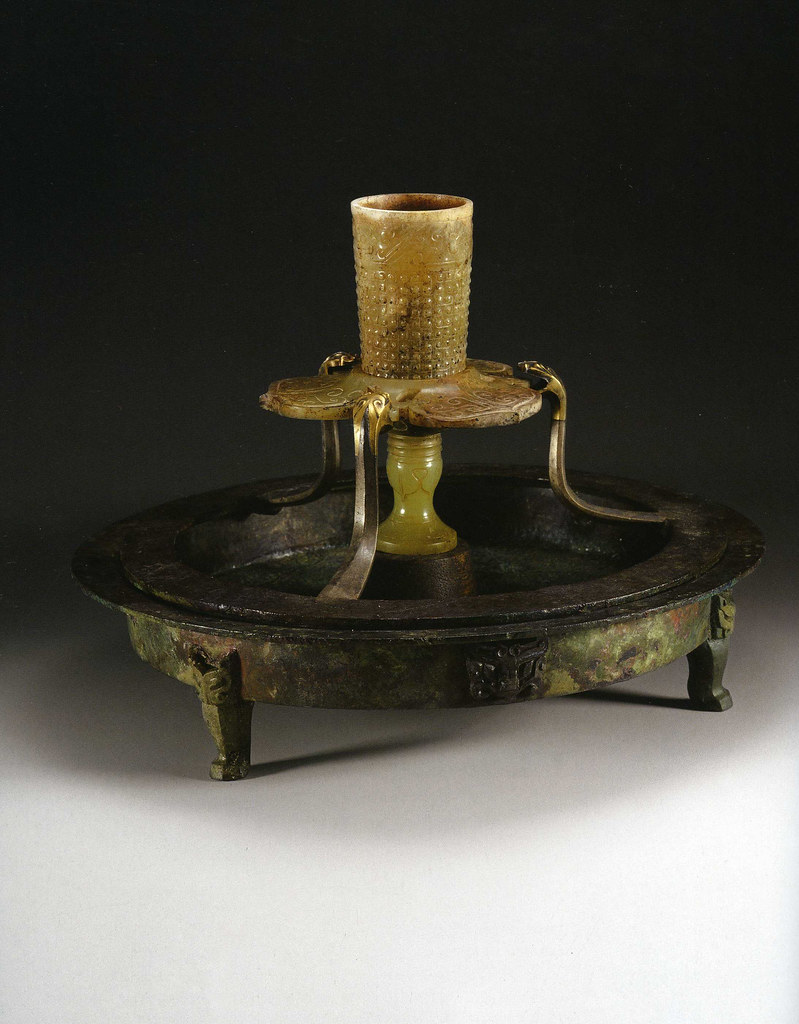
Jade cup, Western Han dynasty (206 BC to 220 AD)
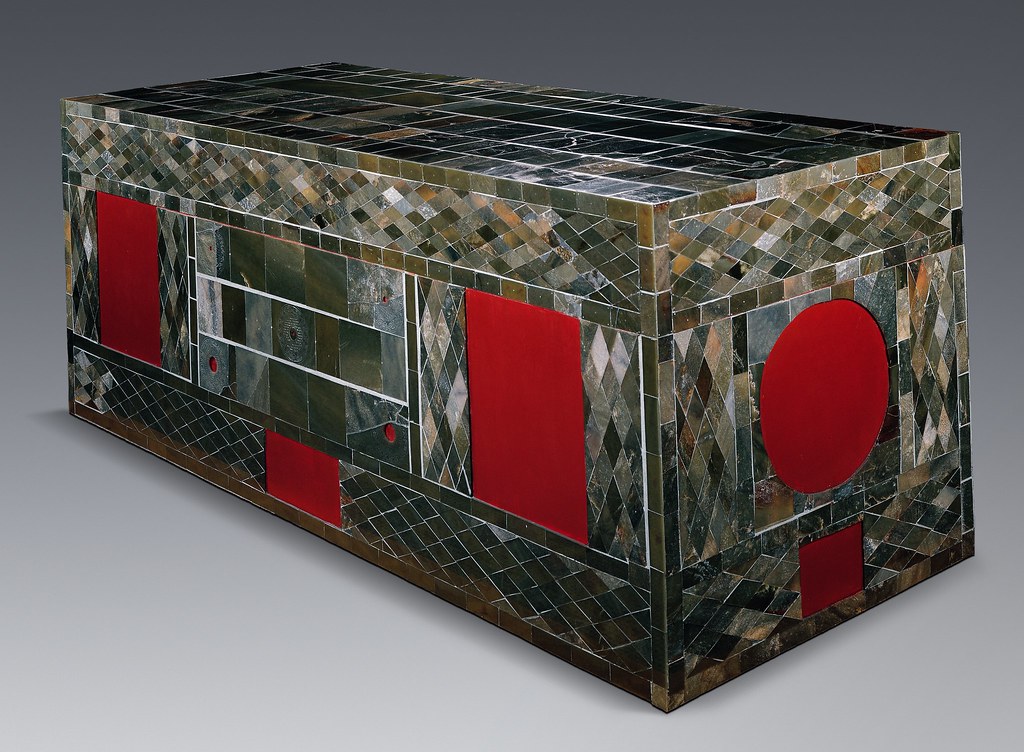
Jade coffin, 2nd century BC, Western Han dynasty
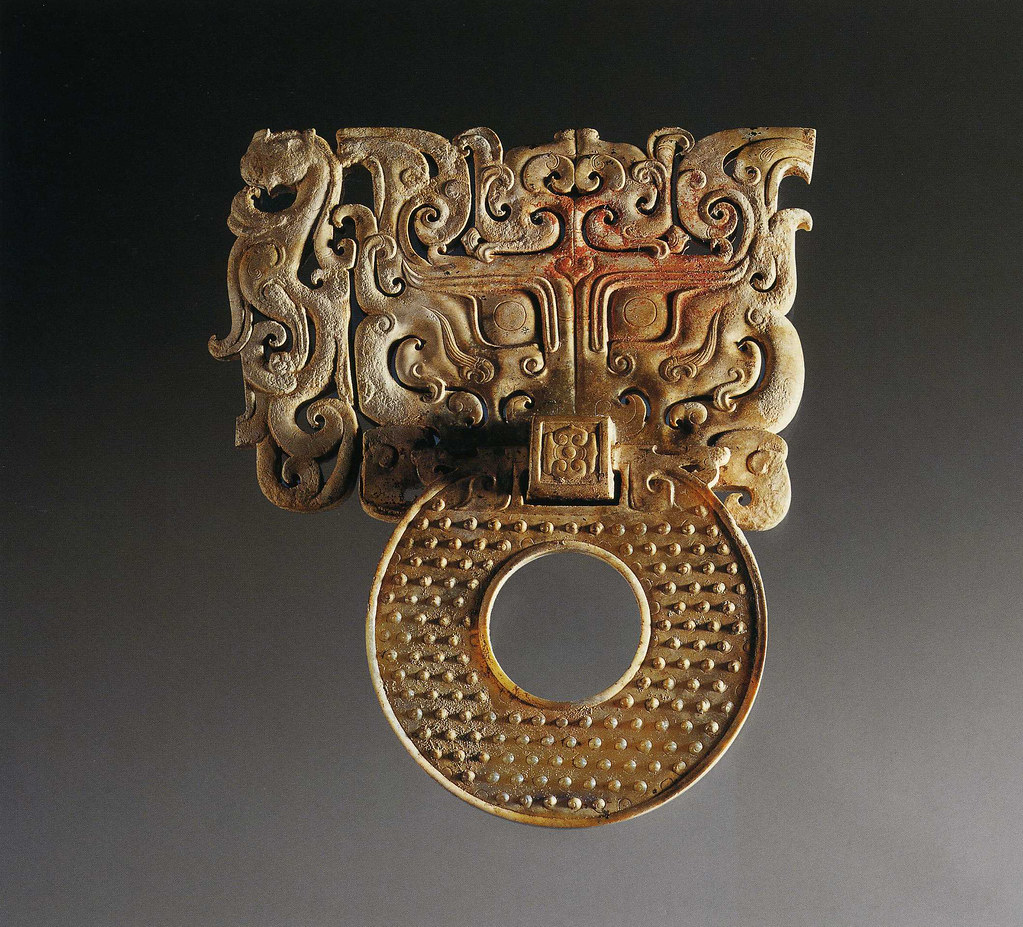
Jade ornament with animal mask, 2nd century BC, Western Han dynasty
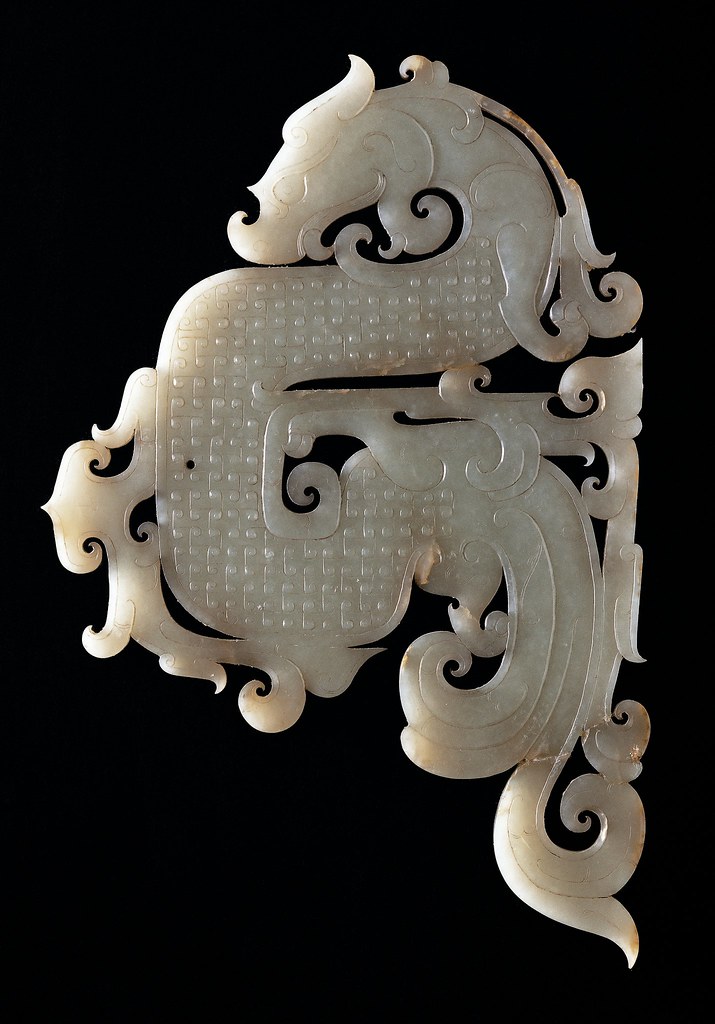
Jade dragon pendant, 2nd century BC
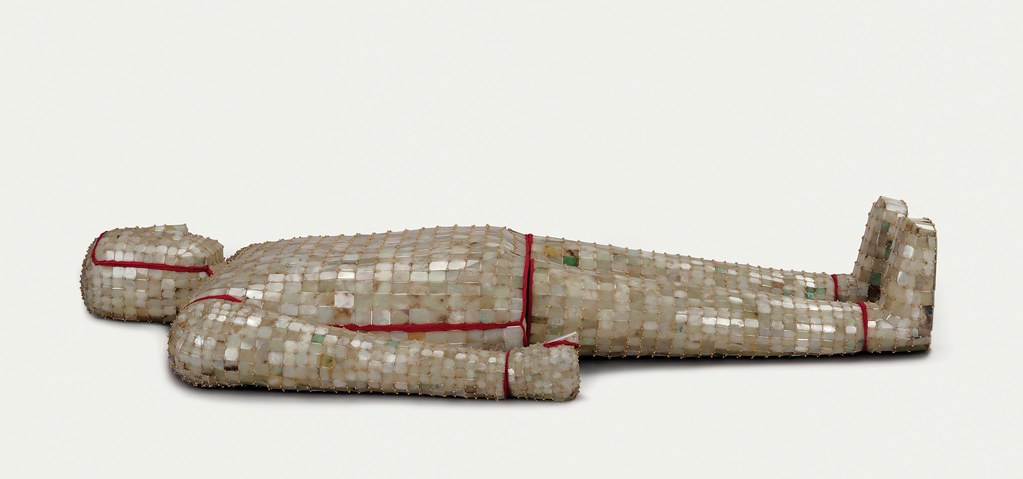
Jade suit, 2nd century BC
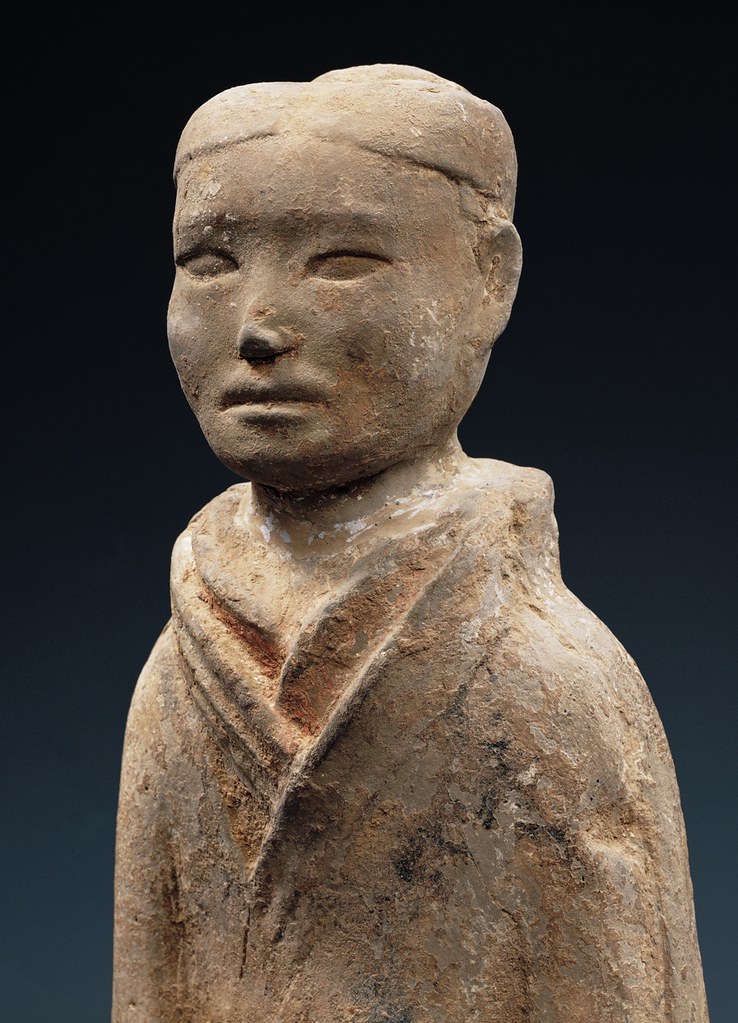
Pottery official, 2bd century BC, Western Han dynasty

Pottery musician, 2nd century BC, Western Han dynasty

Stone lion weight, 2nd century BC, Western Han
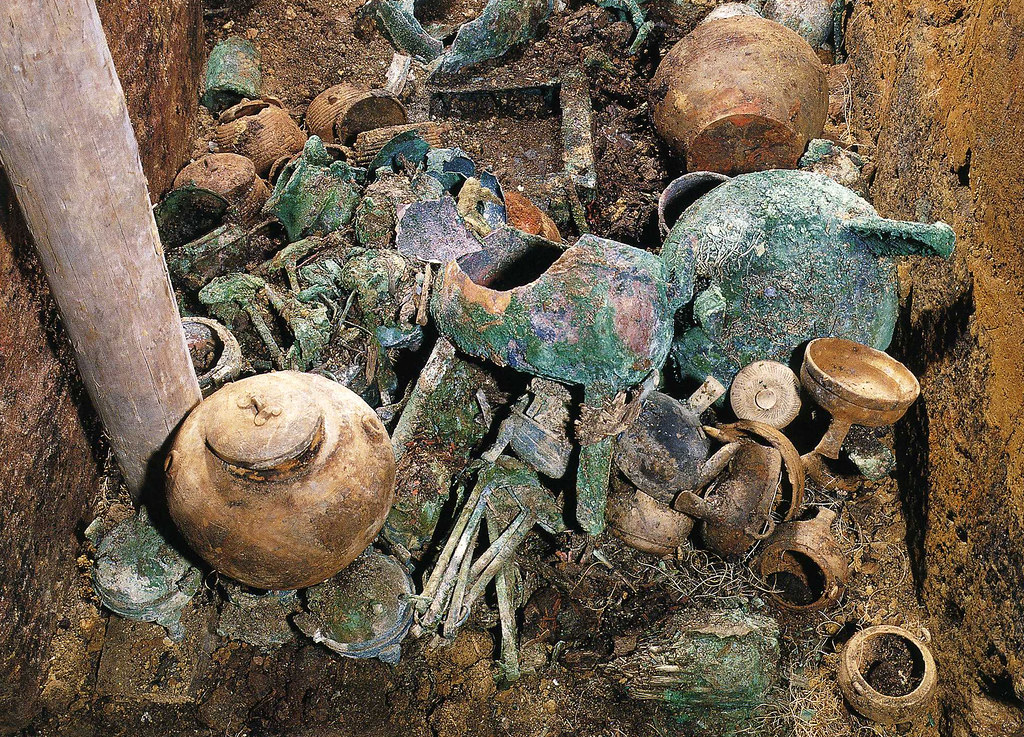
Excavation pit at Nanyue, the Western Chamber
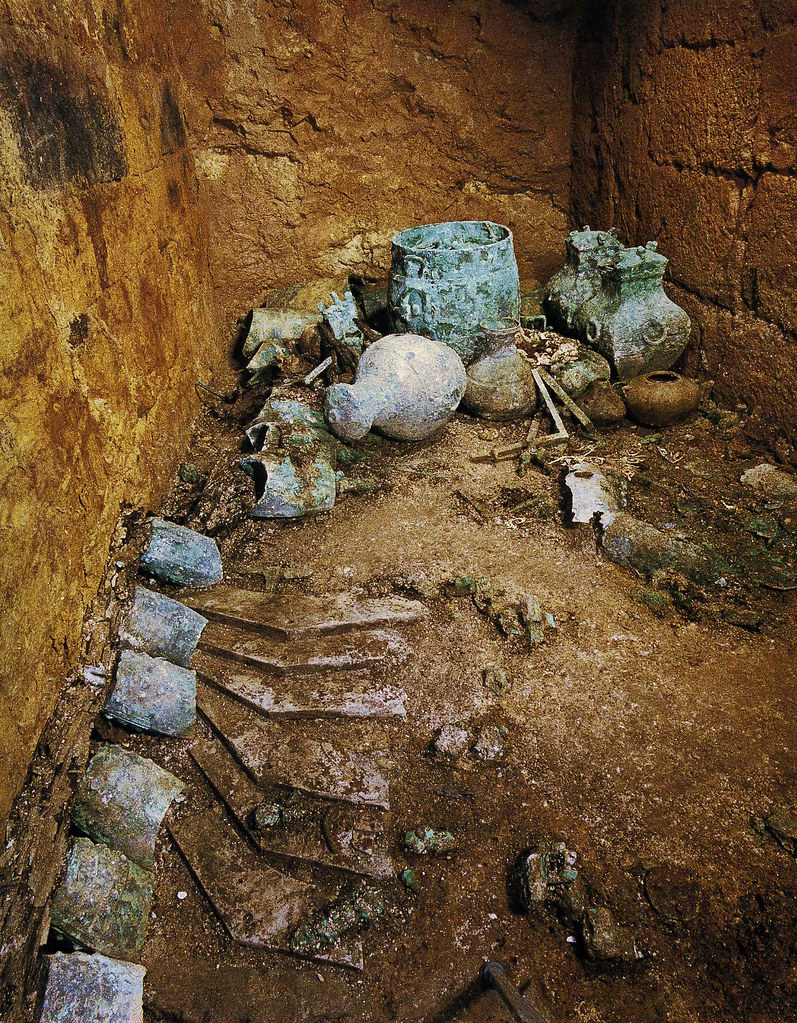
Excavation pit at Nanyue, the Eastern Chamber
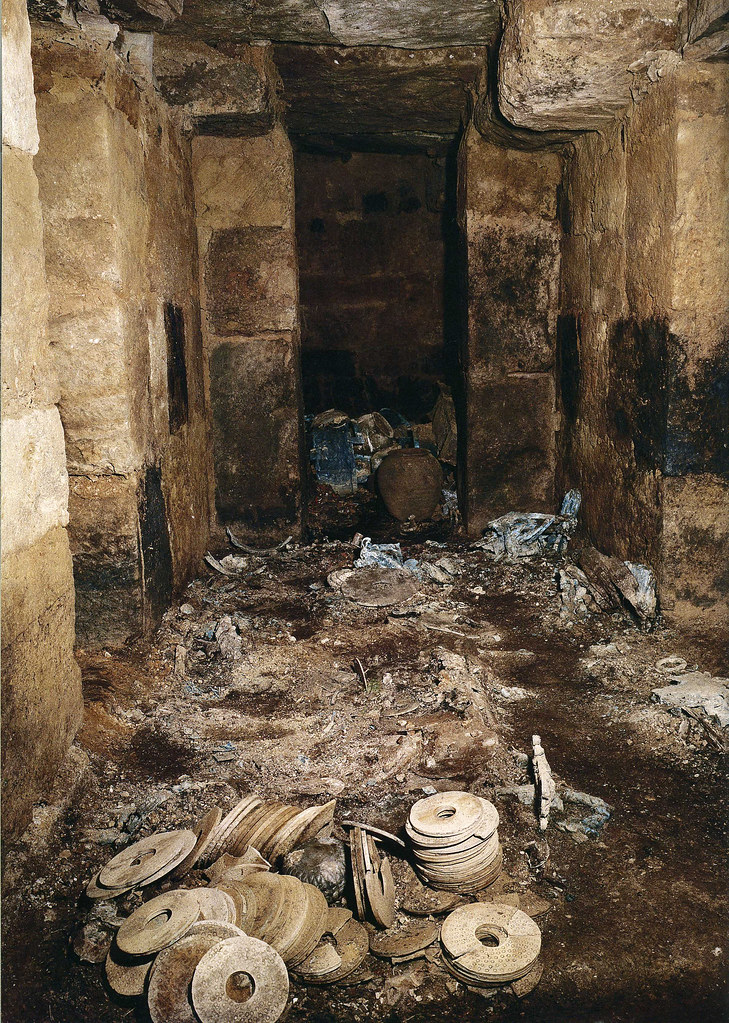
The King's Coffin Chamber at Nanyue
1 comment:
WOW! This is so great to see! Thank you! John MacWhinnie
Post a Comment